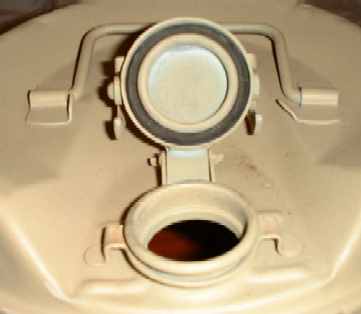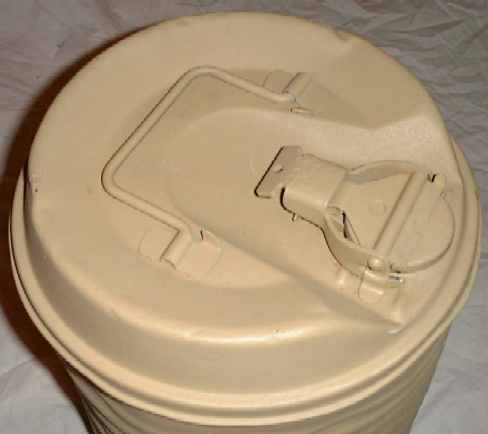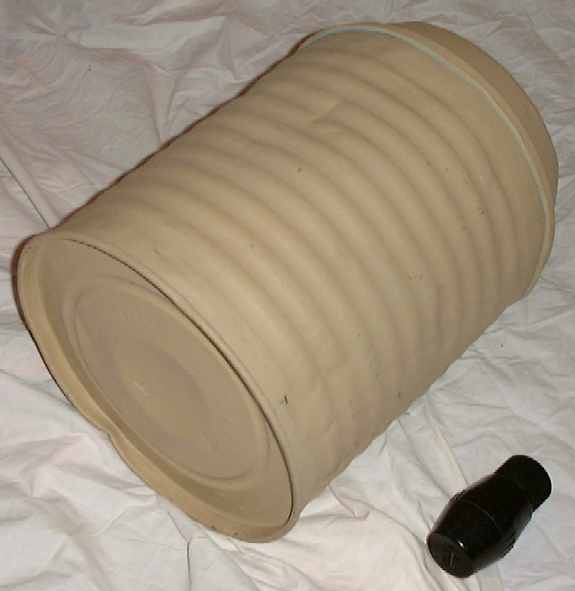| Most supplies dropped by parachute hit the ground
inside one of several types of Drop Container. Generally these
containers were cylindrical in shape and approximately 6ft long, the parachute
attaching to one end, and a crash pan to the other. These were known as
CLE (Central Landing Establishment) Canisters. |
| |
| Resupply drops delivered all type of
items from clothing to ammunition and wireless equipment to petrol. |
| |
| The standard fuel can in use with the
British Army at the time was the "Jerry" can, so called
because the design had been borrowed from the Germans to replace the earlier
Flimsy cans used by the British Army, which leaked badly, couldnt
easily be re-used and were difficult to store and move around. |
| |
| Neither the Jerrycans or the earlier
"flimsies" were suitable for air-dropping. Firstly their rectangular
shape would have required a new type of drop container to be designed
and secondly it was found jerrycans could split open if hard contact with
the ground was made (flimsies werent even suitable for consideration) |
| |
| A new type of can was required that would both
fit inside the drop canister and be strong enough to withstand a parachute
landing. |
|
|
| In 1943 the new design was
finalised and production began. Due to the specialised nature of the can,
it appears that the government contract issued in 1943 was of sufficient
size that no more were made in later years. |
|
| We know from surviving examples that
there were two types of closure, one (illustrated here)... |
| |
|
|
| |
| ... of similar style to the convential
"Jerry" can, but with a round pouring hole, and the other similar
to the "Ameri" Can... a screw type lid. All of the surviving
cans are WD and Broad Arrow stamped on the base and 1943 dated
with the manufacturer's mark. |
|
|
| |
| To fit inside the existing design
of Drop Container they were cylindrical, and had corrugated
sides for strength. |
|
|
| |
| A flat-folding handle on the top with
recessed lid, and a recess in the base enabled them to be fitted together
in 3's inside each drop container... the recessed lid and the height of
the can also made them quite comfortable to sit on. |
| |
|
|
| |
| This particular fuel can was discovered
this year (Summer 2000) in a barn on a farm between Caen and Ouistreham
in Normandy, and was most likely one of many dropped during Operation
Overlord. Interestingly there were 2 others found at the time. All had
unfortunately been sand-blasted and repainted by their owner to make them
more presentable for sale, so this can is not in its original paint scheme.
The black object in the picture beneath is a No 69 Hand Grenade, placed
next to the Fuel can to indicate scale. |
| |
|
|
| |
| This page has been wrtten using information
available to us at the time. If you have any further information about
the history, types and production of this type of fuel can, we would be
interested in hearing from you. |




